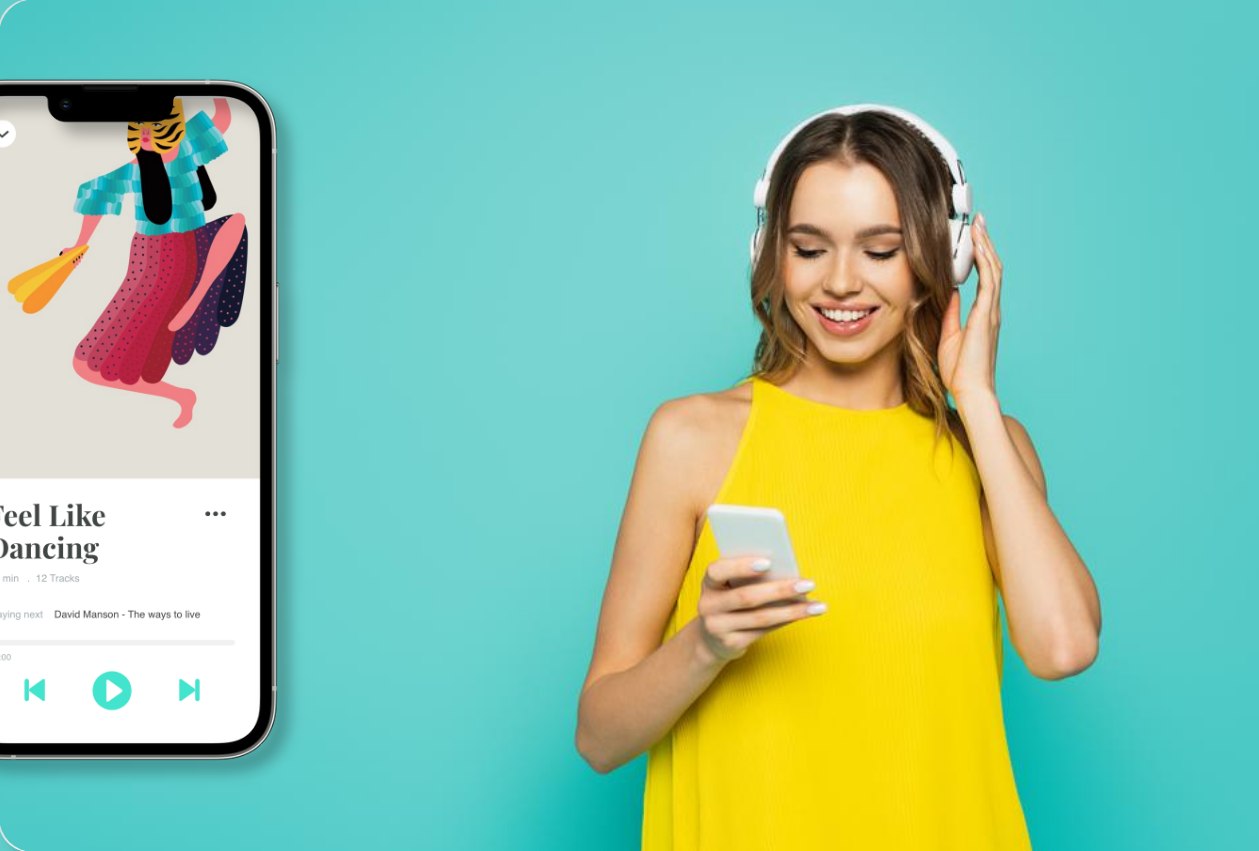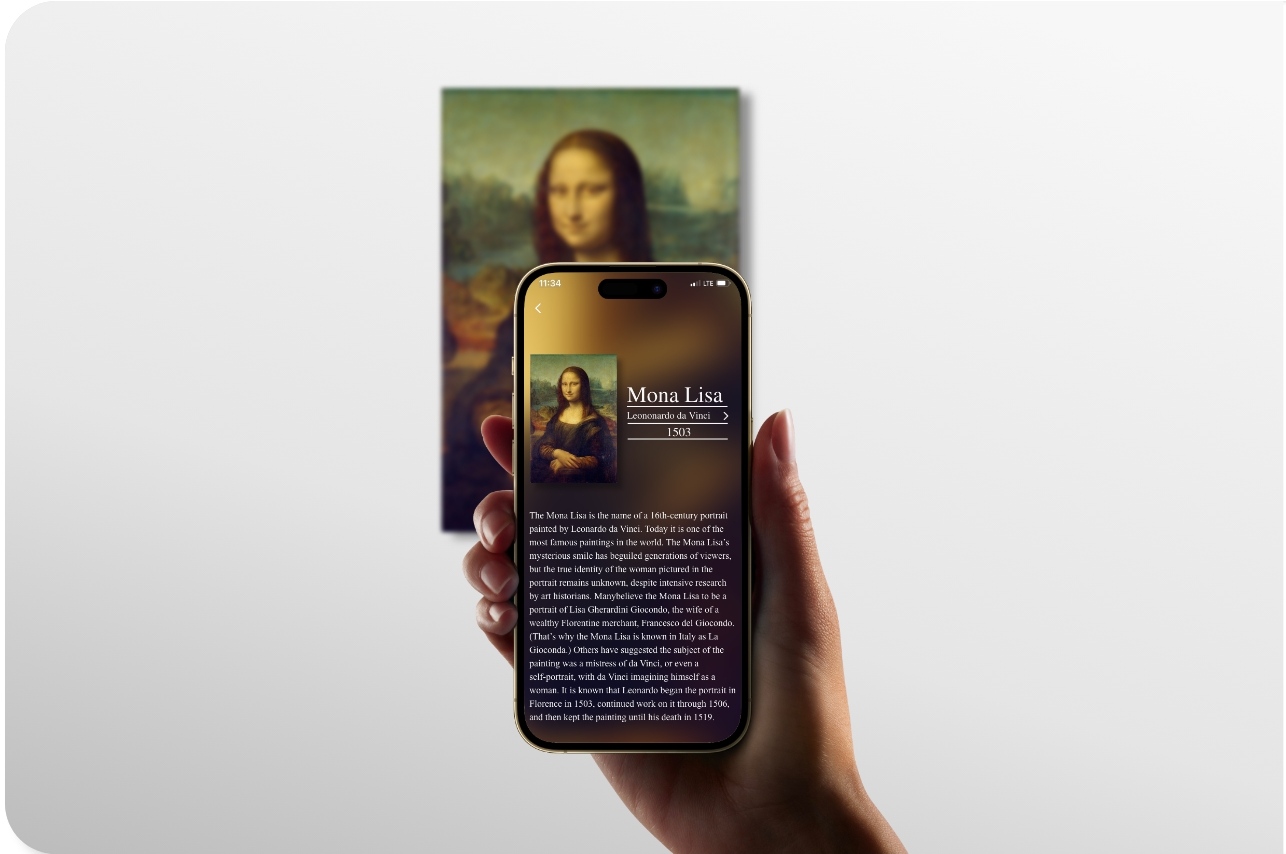
The complete solution you need to understand and prepare for a tornado

Description
Prepare your family and home for tornadoes with the Tornado Safety app, offering comprehensive guidance and easy-to-follow steps for readiness.
Scopes and Constraints
I was assigned an open-ended project to invent a fictional company and product designed to address a critical user issue.
My Role
Research
Design
Prototype
Testing
Timeline
12-week independent end-to-end student project.
Problem
Tornado warnings are always scary and stressful, with limited ways to stay safe and take cover. The unpredictable nature of tornados can make you feel powerless, making it challenging to understand and prepare for these warnings.

Solution
Tornado warnings occur annually, and while we can’t prevent them, we can empower ourselves through knowledge and preparation. The Tornado Safety app helps users track and prepare for tornadoes.
PROCESS

Secondary
Survey
User Interviews
Personas
HMW

User Stories
User Flows
Sketches
Guerrilla Testing

Wireframes
Wireflows
Mockups
Visual Design
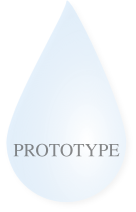
Low-fidelity
Mid-fidelity
High-fidelity

Usability Testing
Iterations
RESEARCH
Secondary
Insights
- Most tornadoes are found in the Great Plains of the central United States.
- Peak tornado season spans March through June, accounting for nearly 70% of all tornado occurrences.
- Basements are uncommon in southern states due to high water tables.
- Prepare well ahead of storms that could bring tornadoes.
- Understanding the distinction between a "tornado watch" and a "tornado warning" can save lives.
Survey
I recruited 5 users concerned about tornado warnings and safety through a screener survey for remote 1:1 interviews, informed by insights from secondary research.
Interviews
I conducted 5 remote 1:1 interviews with users focused on tornado warnings and safety. Through open-ended questions, I identified key opportunities to address their needs and pain points. Here are the highlights from those interviews.
Insights
- Newcomers to tornado-prone areas often lack knowledge and preparation when tornado warnings occur.
- People in the path of weaker tornadoes often receive insufficient notice to seek shelter promptly.
- Mobile home residents have limited options for seeking shelter during tornadoes.
- A family plan and emergency kit are crucial for safety.
Personas
User interviews revealed a correlation between awareness levels and actions during tornado warnings, leading to the identification of two user types: experienced and inexperienced.

Joel H.
- Age. 27
- Fort Worth, Texas
- Dependency Counselor

Frustrations
- Not enough notice to seek shelter
- Unpredictable timing
- Tornado damage
Goals
- Enough time notice to seek shelter
- Be able to track storm minute by minute
- Create tornado safety kit

Ruby D.
- Age. 24
- Grandbury, Texas
- Waitress and nursing student

Frustrations
- Having to find a local tornado shelter
- Limited safety precautions
- Lack of tornado safety knowledge and experince
Goals
- Have access to all local tornado shelter addresses and numbers
- Have a step by step safety guide
- Read and learn more on tornado warnings and the correct safety procedures
IDEATE
How Might We
Using my recent research insights, I focused and defined the problems using “How might we” (HMW) questions. These questions will guide solution sketches and user mapping.

- Provide safety tips during a tornado warning
- Help alert people during a tornado waring
- Help ones stress during a tornado waring
- Improve safety precautions during a tornado warning
User Stories
User stories were created based on research and ideation to address the needs of potential Tornado Safety users. These stories were organized into 7 high-level functions that form the core features of the app.
I want to receive alerts early to take necessary safety precautions promptly.
I need safety tips to prepare effectively and take cover properly.
I want access to live radar to locate and identify tornadoes.
I want updated storm videos to see its impact on other areas.
I want access to numbers, addresses and directions to nearby public tornadoes shelters.
I want to receive notifications for updates, reminders, and important information.
User Flows
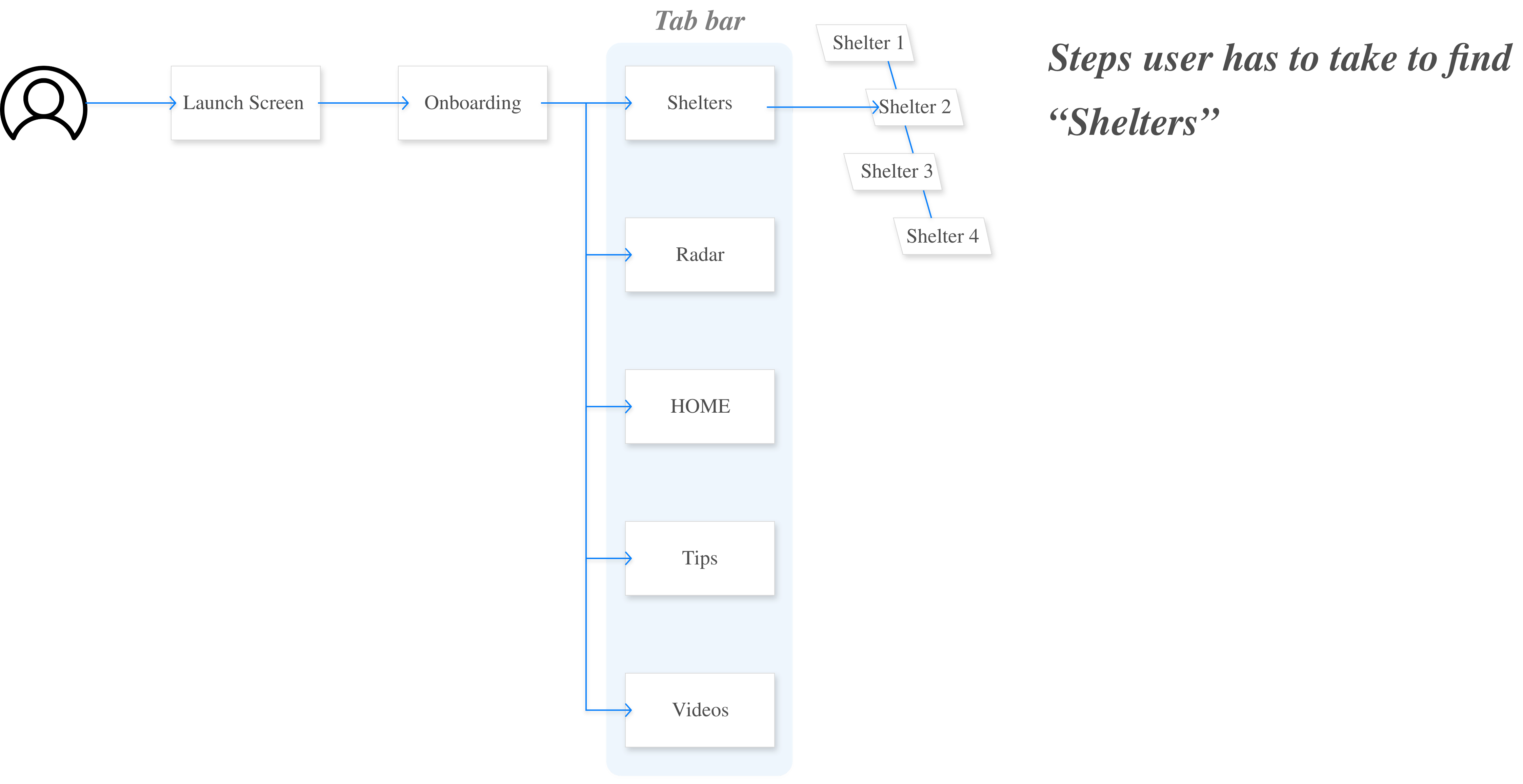
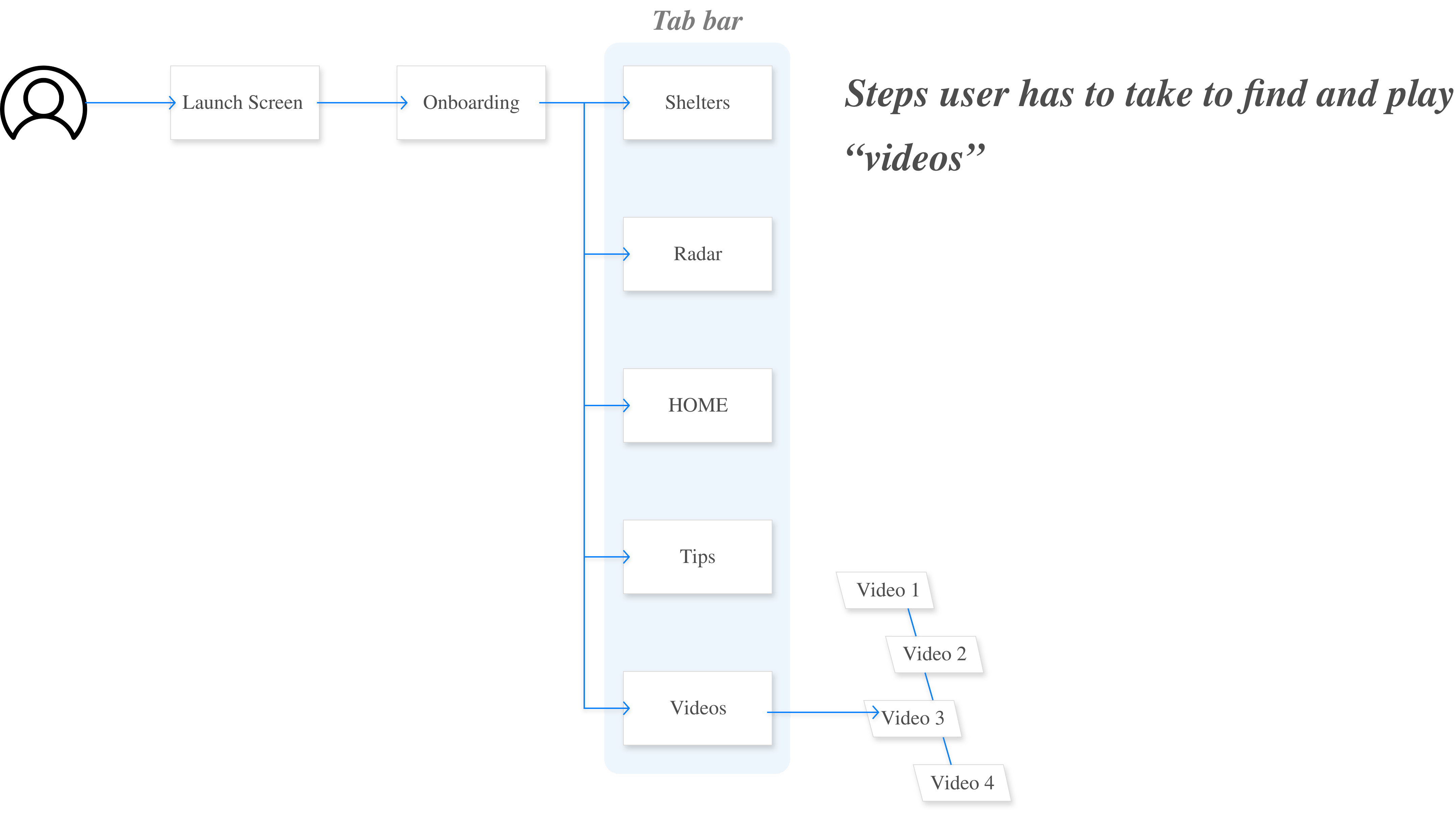

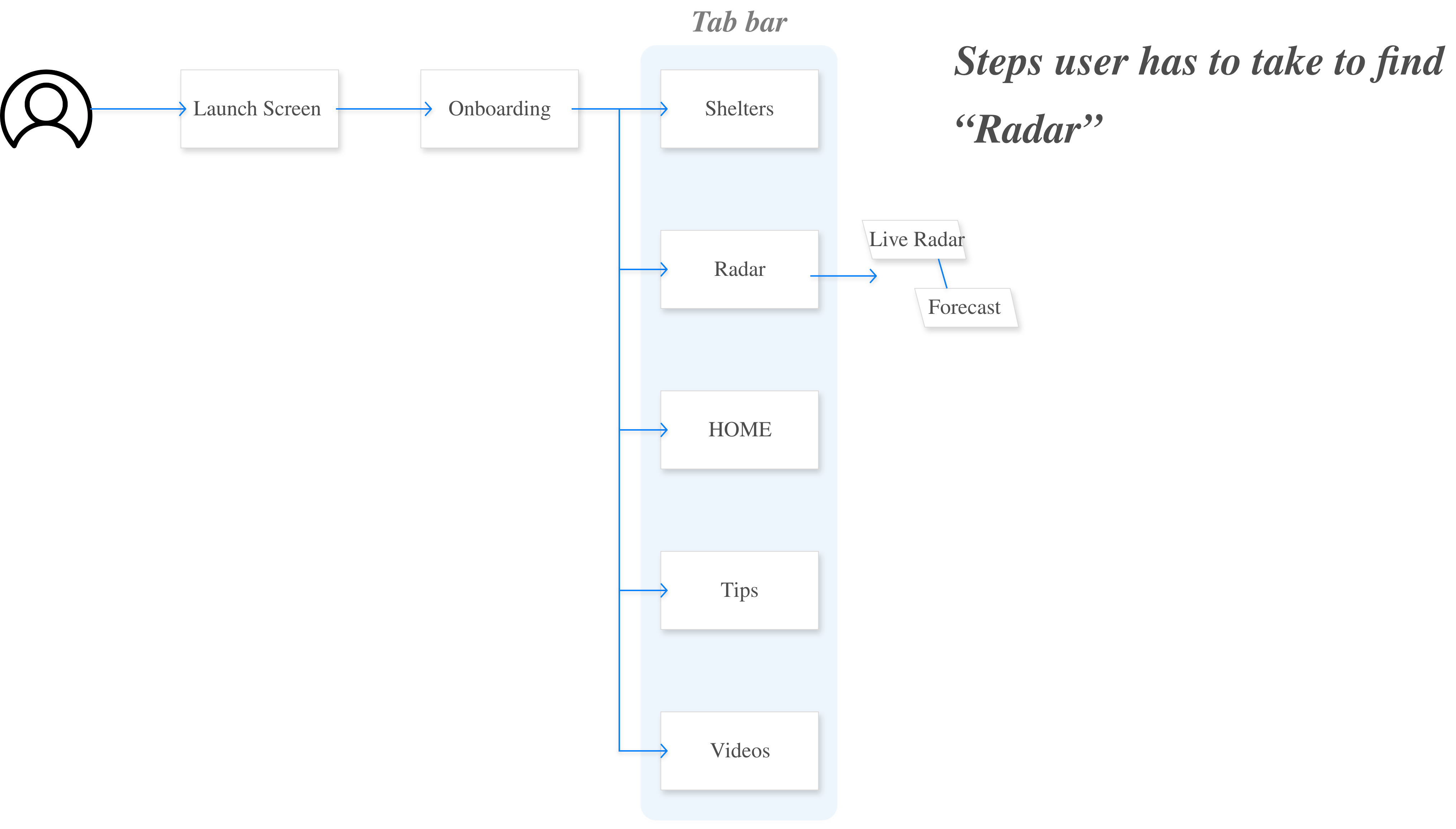
Informational
Architecture
After choosing key user stories for the MVP, they were used to structure the Tornado Safety app. High-level activities guided the main tab bar’s navigation, forming the app’s core organization. Additional stories and tasks expanded the app’s screen map.

Guerrilla Testing
To validate my critical paths efficiently, I created simple paper sketches for an MVP prototype. Testing these sketches provided valuable insights into effective layouts before moving to digital designs.

Insights
- Users found the "before and after safety tips" highly valuable and essential within the app.
- Access to names, phone numbers, and addresses of nearby shelters is crucial for residents in mobile homes.
- Users appreciated the "live radar" feature, finding it extremely helpful.
DESIGN
Wireflows
Mid-fidelity wireframes for each of the critical red routes were created and mapped out
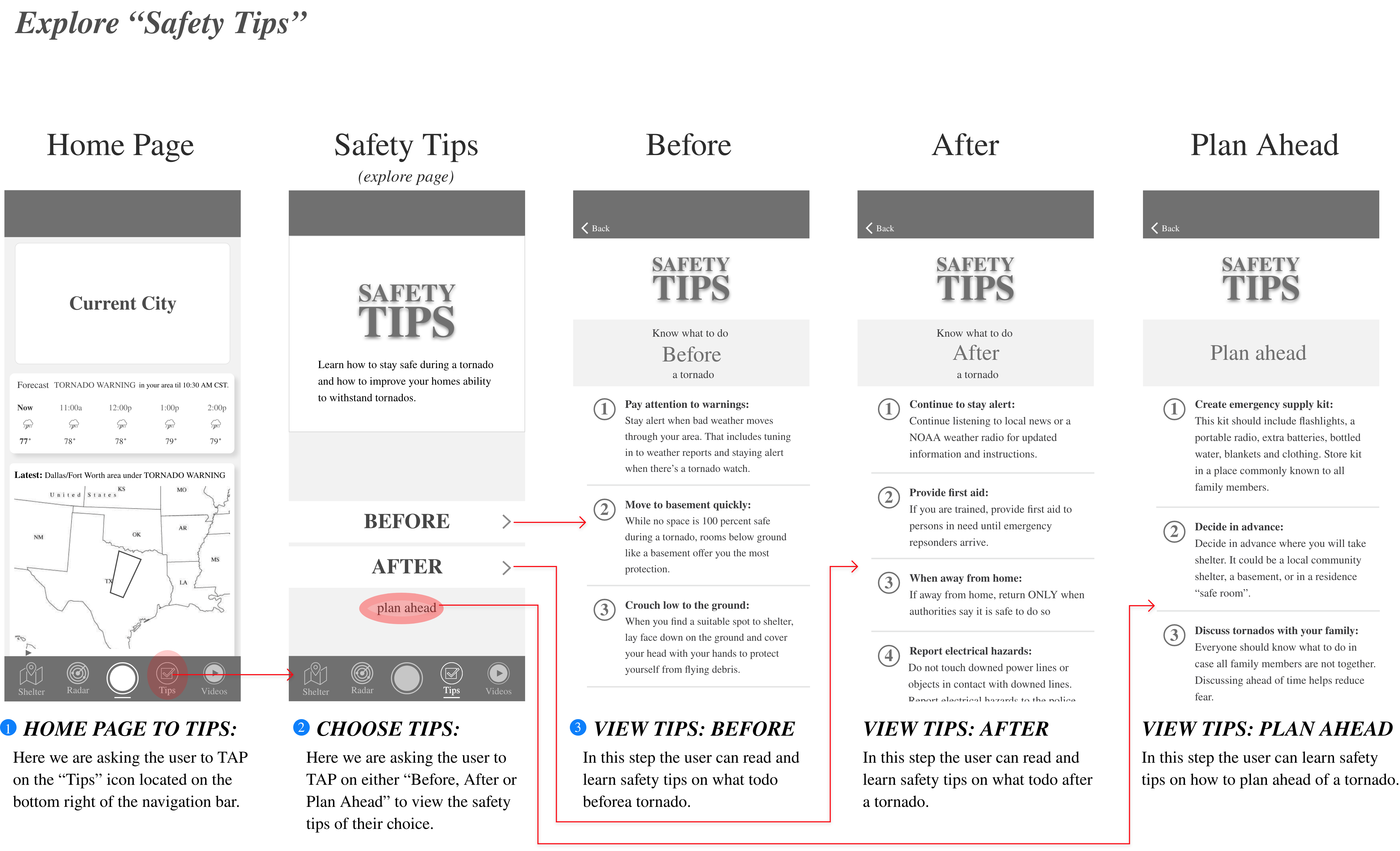
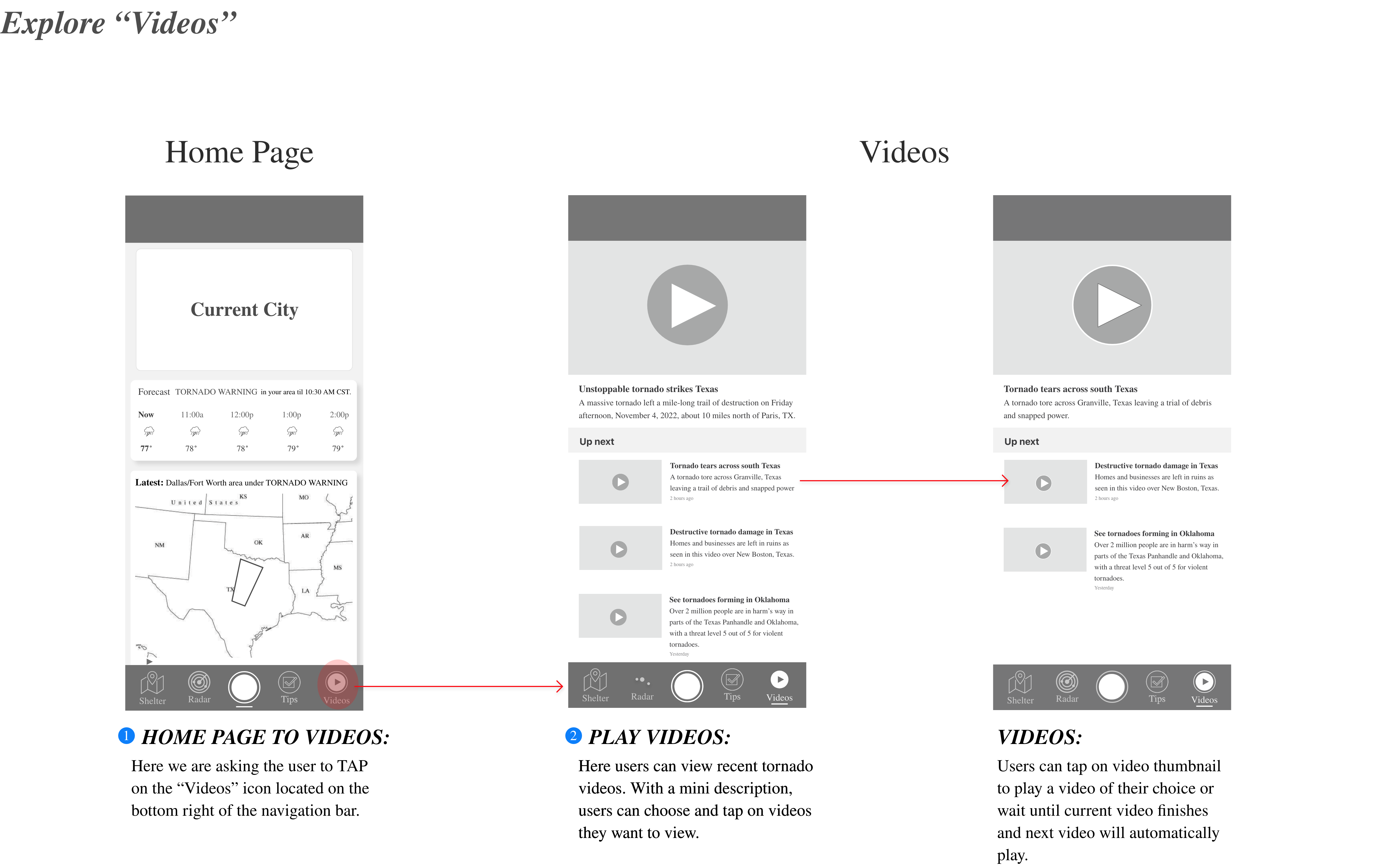
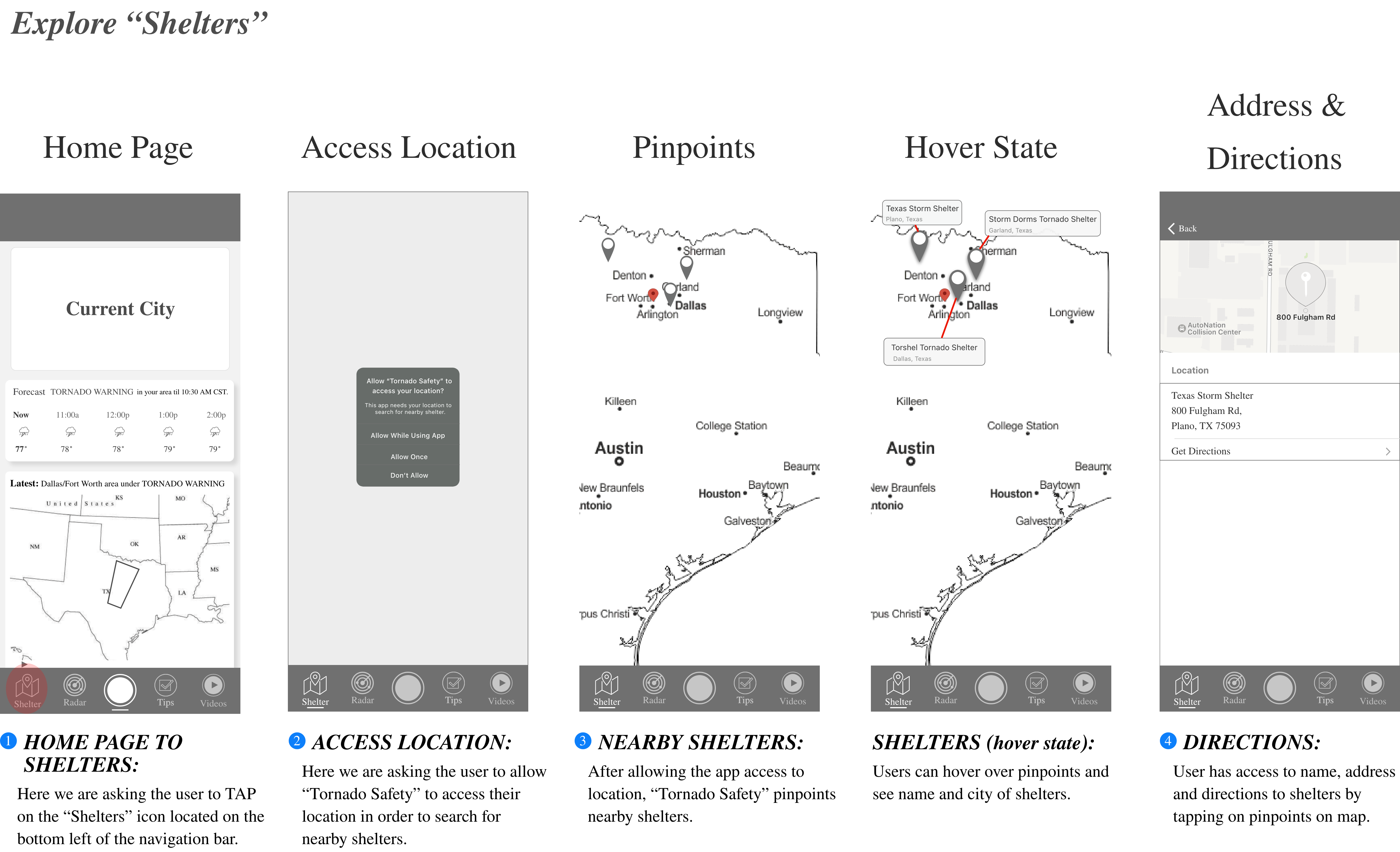
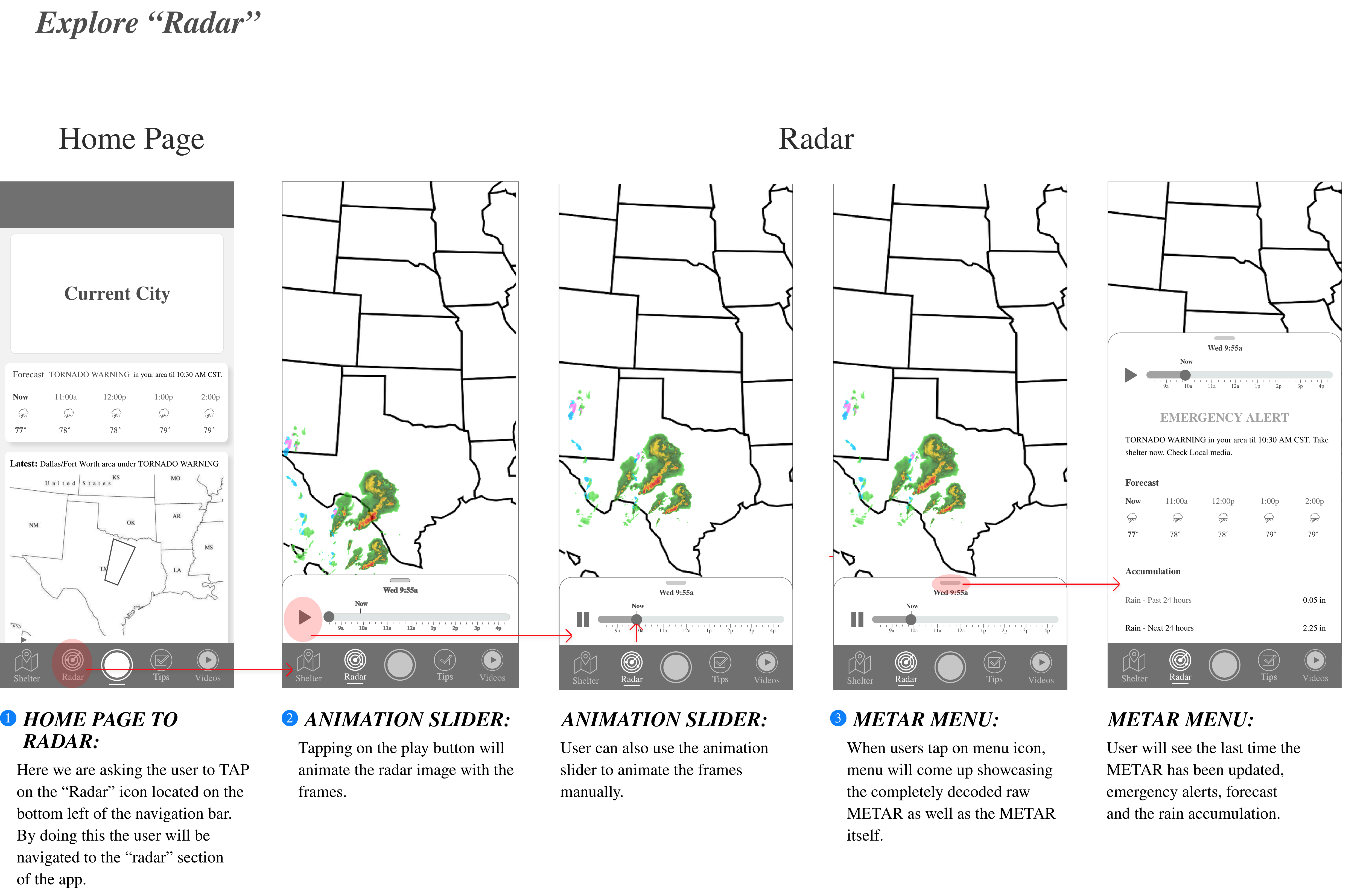
Wireframe Prototype
Based on guerrilla usability test feedback, I prototyped mid-fidelity wireframes and conducted 3 informal moderated usability tests to enhance the experience and align with user expectations.
Insights
- Including a "plan ahead" section in "safety tips" provided users with additional insights and ideas for better preparedness in advance.
- Users appreciated seeing the weather forecast for their current city on the home page to plan ahead and stay safe.
- Adding a shortcut of the live radar on the homepage was a safety-oriented decision to save users time in preparation.
Crafting The Brand
Creating a brand for a weather safety product presented challenges, balancing approachability and technical expertise based on user research. The aim was to establish trust without overwhelming users with complexity.

I chose blue and red as primary colors for the name and logo design. The word “safety” is highlighted in a larger font to emphasize its importance.
Style Guide
Insights
HEADLINE 1
STIXGeneral 50 px
HEADLINE 2
STIXGeneral 40 px
HEADLINE 3
STIXGeneral 30 px
Paragraph
STIXGeneral 20 px
Color Pallet
- #1E4D9B
- #E23F19
- #FDFFFC
- #0F0F0F
Iconography
Main Logo

Mobile App Icon

Visual Design

High-Fidelity
High-fidelity wireframes for each of the critical red routes were created and mapped out
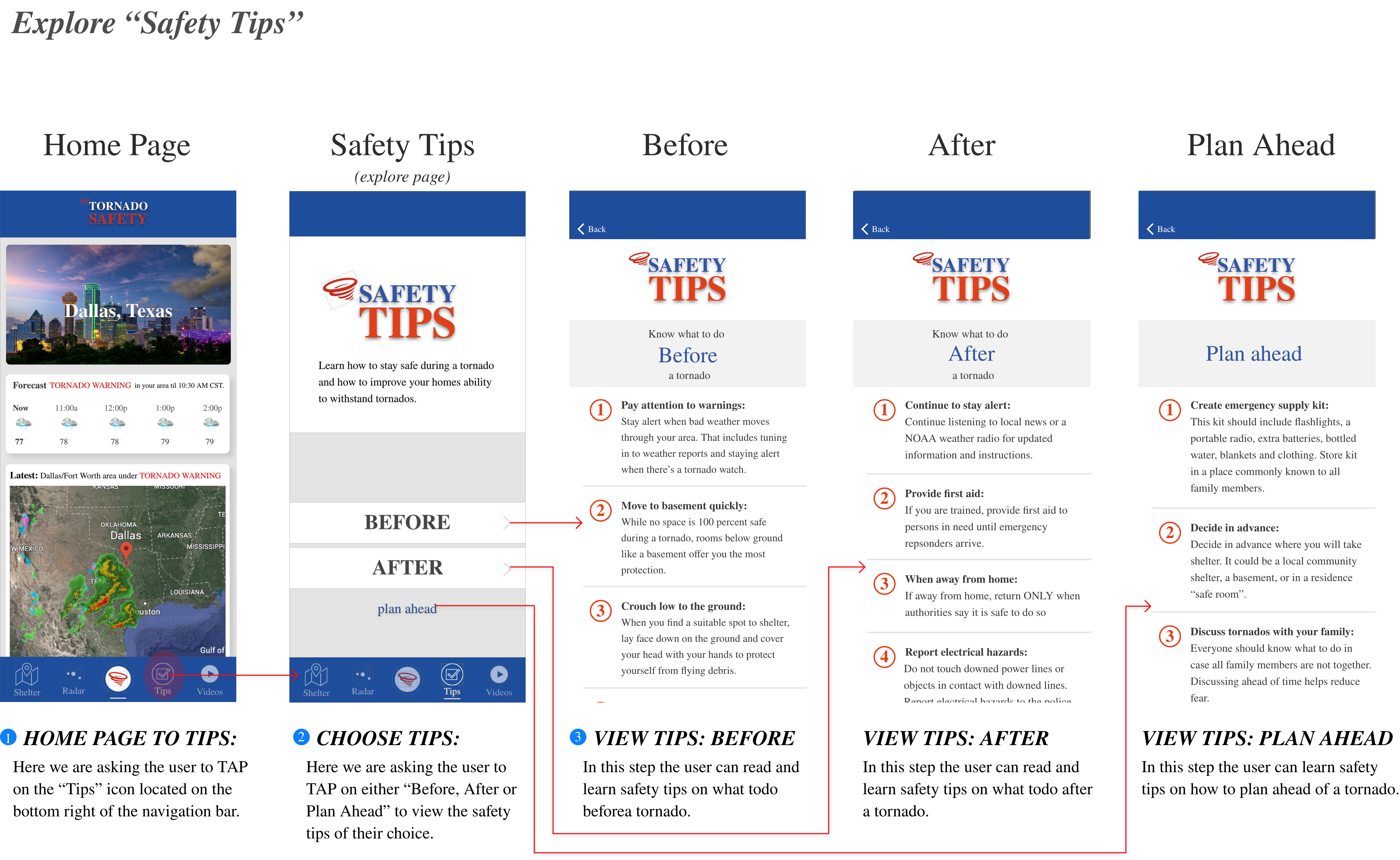


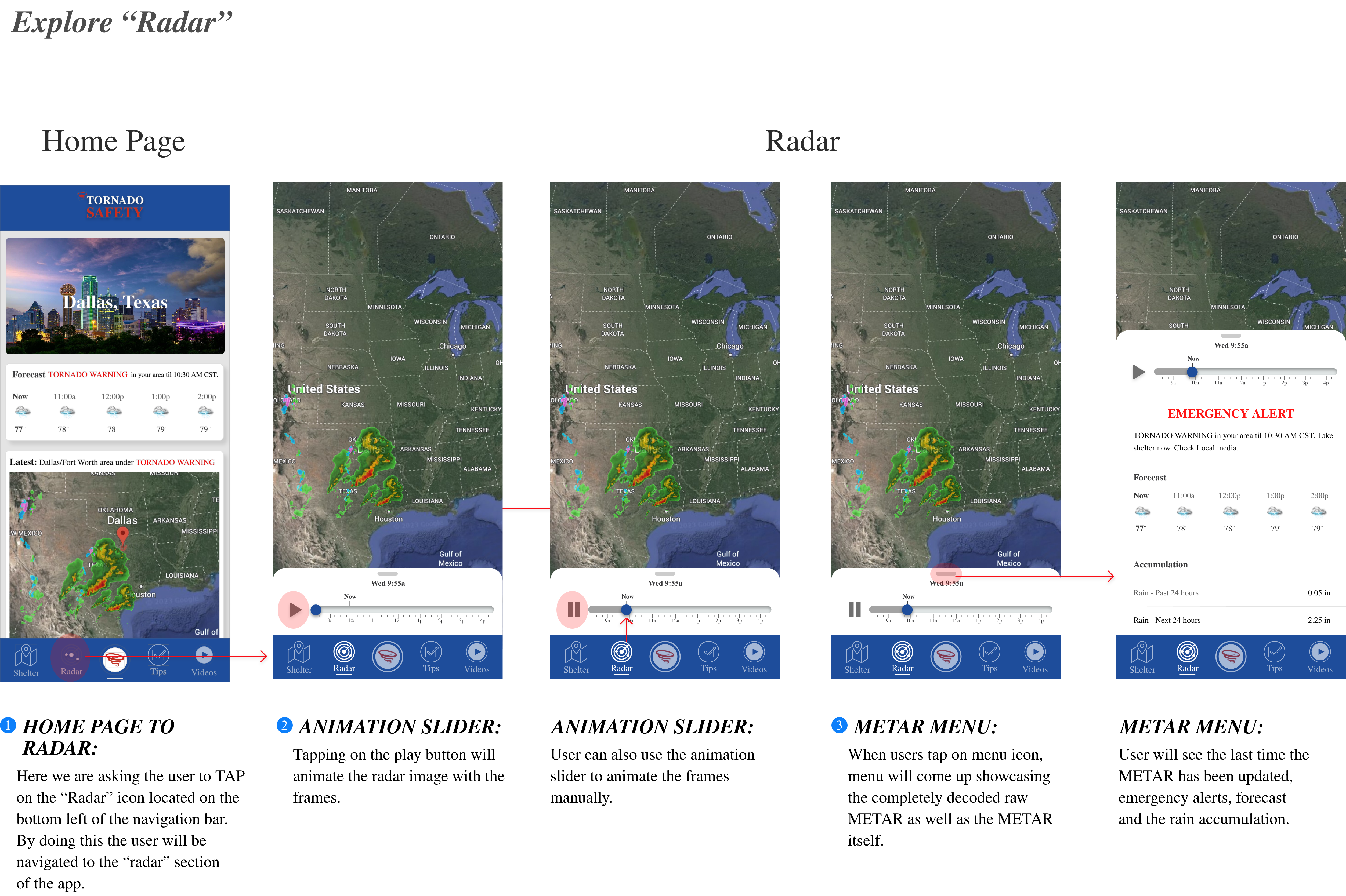
PROTOTYPE
Final Prototype
A high-fidelity prototype was created, incorporating all research, testing, and visual design completed throughout the entire process.
TEST
Usability Testing
I conducted one round of remote usability testing with five participants similar to the persona, using the final prototype to validate and improve the user experience.
Iterations
- Added more safety tips for each category ( before, after, plan ahead)
- Added working videos that users can view.
- Added additional forecast and rain accumulation to the radar.
Reflections
My first design project using design thinking was exciting and eye-opening. Creating Tornado Safety received positive feedback, highlighting a real market need for weather safety solutions. As designers, focusing on user outcomes is crucial for maximizing benefits. This project was a valuable learning experience in design.


